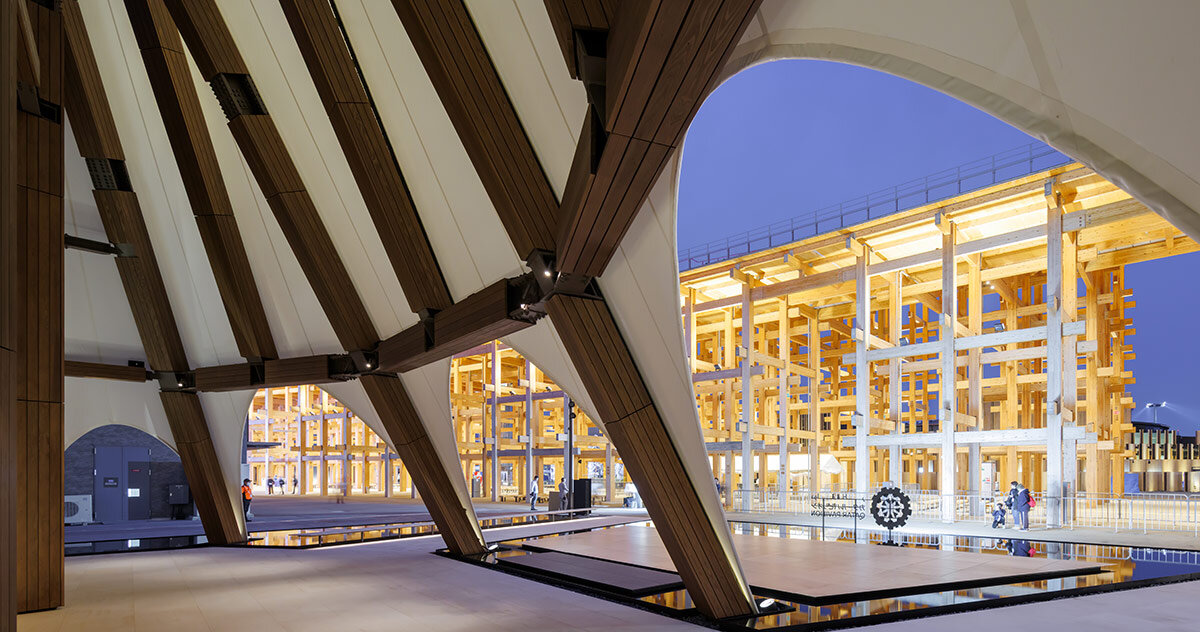the Qatar Pavilion is anchored in Maritime Memory
As Expo 2025 Osaka unfolds under the theme ‘Designing Future Society for Our Lives,’ the Qatar Pavilion by Kengo Kuma & Associates introduces an architectural meditation on dualities: land and sea, tradition and innovation, Qatar and Japan. Located on the waterfront site of Yumeshima Island, the pavilion brings together the fluidity of fabric, the solidity of timber, and the stories etched into coastlines, both real and remembered. Inside, an exhibition has been curated and designed by OMA / AMO, led by Samir Bantal. See designboom’s previous coverage here!
The pavilion, photographed by Iwan Baan, comes together in the form of a sweeping architectural gesture shaped like a dhow, the traditional sailing vessel once vital to trade and pearling in the Arabian Gulf. Its curving white canopy, suspended from a finely joined timber frame, evokes both a sail catching the breeze and the tensile calm of Japanese and Qatari wood craftsmanship. The architects note that the dhow is more than symbolic. It is a shared vernacular that represents human-scale exchange across water.
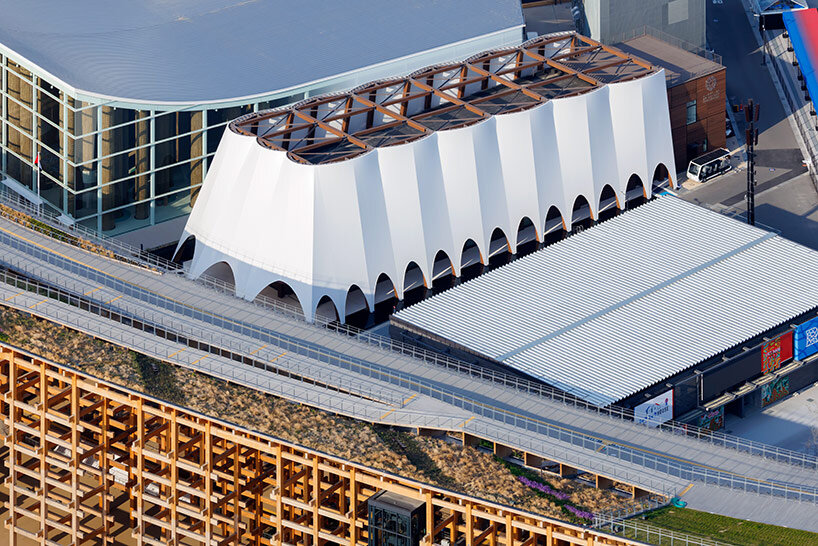
The Qatar Pavilion evokes a traditional dhow sailing vessel | image © Iwan Baan
Kengo Kuma Blends Heritage Through Craft
Kengo Kuma & Associates’ Qatar Pavilion is a celebration of construction methods as much as form at Expo 2025 Osaka. The pavilion incorporates timber joinery techniques drawn from both Qatari and Japanese traditions, creating a structure that appears both ancient and futuristic. According to the design team, this synthesis of techniques reflects a respect for cultural continuity and a shared sensibility rooted in the sea.
The architects set the tone with an entry framed by poetic verse. Outside the pavilion, vitrines display poems by Sheikh Jassim bin Mohammed bin Thani and Ahmed bin Hassan Al-Muhannadi, printed against coastal imagery. The visuals replicate the gradient of the Gulf’s waters — deep indigo fading to aquamarine — as seen by sailors returning to shore.
A sequence of transitions define the experience, as the interior leads visitors from the maritime realm into the arid terrain of inland Qatar. A series of sand samples, each distinct in tone and texture, conjure the deserts that lie beyond the coast. Wall graphics reference the petroglyphs of Al Jassasiya, carved into stone by generations of inhabitants.
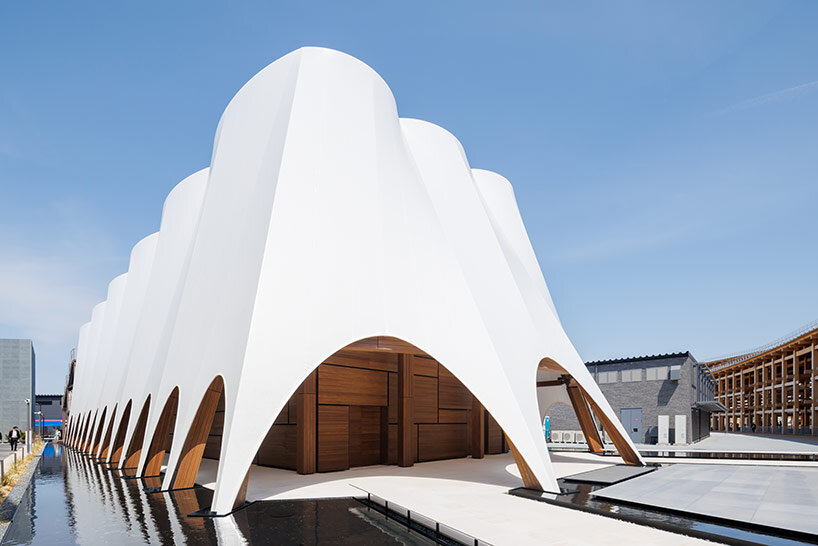
the lightweight structure uses Qatari and Japanese joinery techniques | image © Iwan Baan
the exhibition by OMA / AMO
Titled From the Coastline, We Progress, the OMA / AMO-curated exhibition deepens the narrative established by Kengo Kuma & Associates’ architecture, bringing an immersive journey into the nation’s past, present, and future as seen through its relationship with the sea. Developed under the direction of Samir Bantal, the exhibition transforms Qatar’s 563-kilometer coastline into a story of environmental adaptation, cultural resilience, and strategic transformation.
Visitors are first guided by a visual gradient that transitions from oceanic blues to desert tones, leading them toward the entrance. Aerial photographs of Qatar’s coastline — particularly the protected area of Al Zubarah — are displayed alongside poetry by Sheikh Jassim bin Mohammed bin Thani and Ahmed bin Hassan Al-Muhannadi, reinforcing the country’s poetic and ecological heritage. Inside, tubes of sand sourced from different desert zones act as tactile markers, both material and metaphorical, guiding the flow of movement through the space.
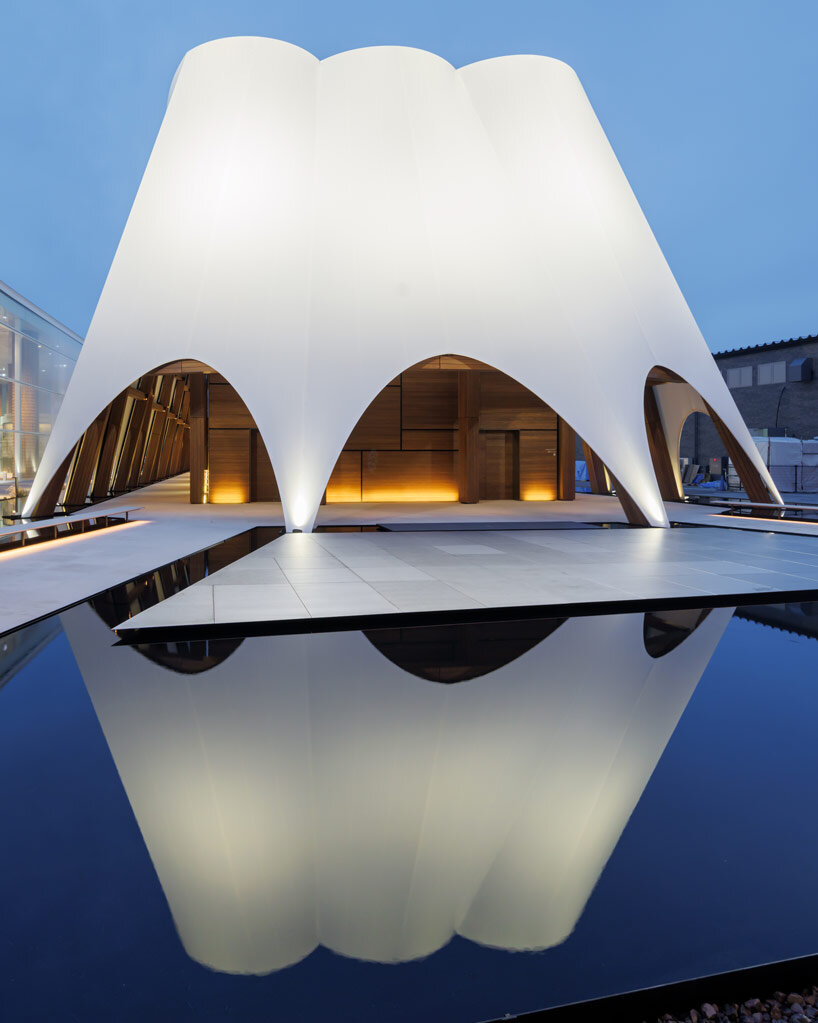
white flowing fabric captures both breeze and heritage | image © Iwan Baan
A deep blue curtain, created with Inside Outside, wraps the main exhibition hall, evoking the stratified densities of the sea. Within, a wedge-shaped aluminum structure houses twelve niches, each dedicated to a specific coastal site such as Khor Al-Udaid, Al Wakrah, Old Doha Port, or Ras Laffan. These vignettes combine panoramic imagery, tactile maps, and colored beads that signal each site’s role in Qatari life — whether industrial, ecological, cultural, or diplomatic.
At the heart of the experience is a cinematic installation modeled after a traditional Qatari winter majlis. The three-channel film, directed by AMO and Samir Bantal, interlaces archival material with new footage — British Petroleum reels from the 1950s and panoramic shots by filmmaker Ron Fricke — to explore Qatar’s complex modern identity through its land, sea, and people.
Before exiting, visitors encounter a compact display of traditional objects on loan from the National Museum of Qatar — relics from pearl diving and domestic life that serve as reminders of the material culture that once sustained the nation’s shoreline communities. This exhibition continues AMO’s long-standing engagement in the Gulf, complementing previous work on the Qatar National Library, the Qatar Foundation headquarters, and the landmark Making Doha exhibition in 2019.
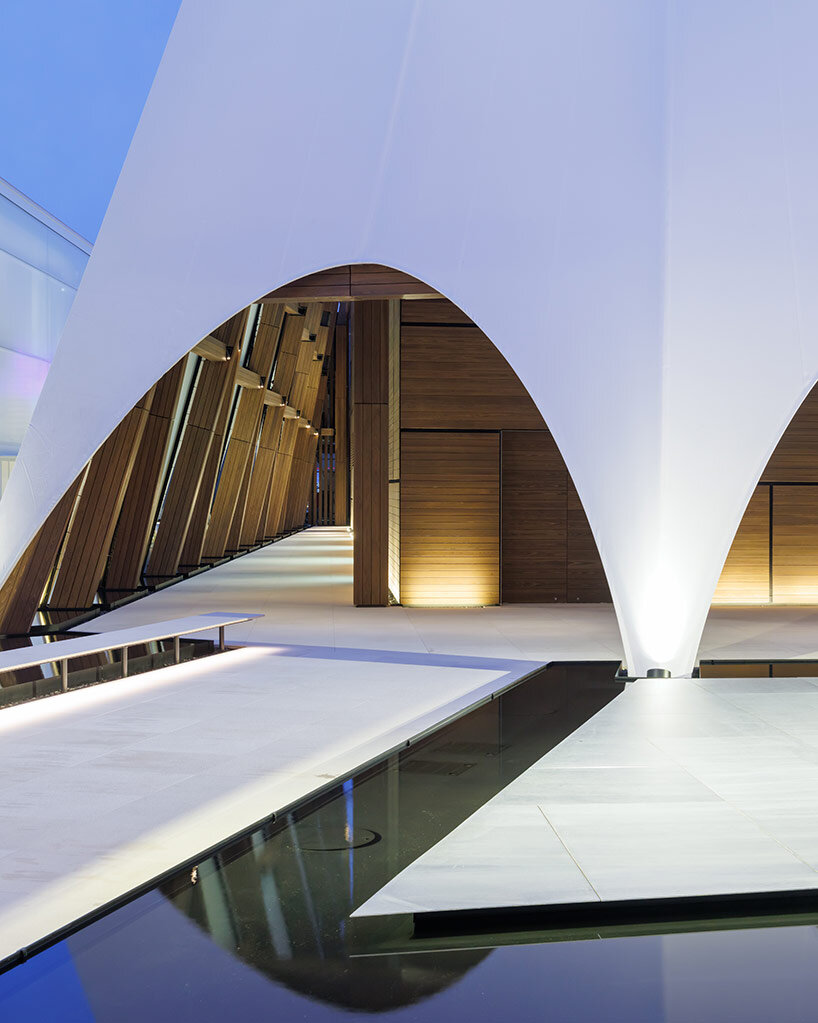
poems by Qatar’s founding figures greet visitors at the entrance | image © Iwan Baan
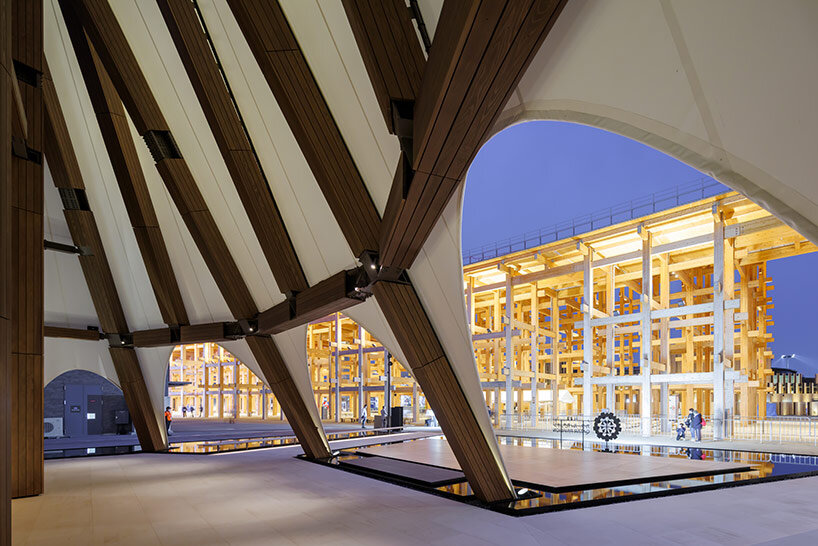
Sou Fujimoto’s Grand Ring is framed by tensile openings in the fabric structure | image © Iwan Baan
